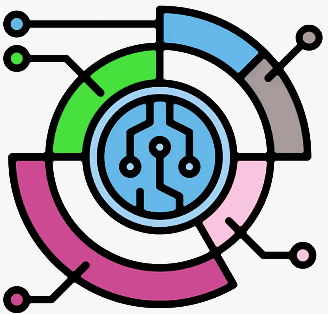Accredited InvestorsAltcoinAnatoli UnitskyAnti-Money Laundering (AML) In CryptoAPIArbitrageArtCoin TokenArticle DirectoryASICAuction Terminology GlossaryBasics of Stock Market InvestingBear MarketBest Crypto Payment Provider In the WorldBitcoinBlockchainBlockchain ConfirmationBlockchain Consensus MechanismBlockchain ForkBlockchain GlossaryBored Ape Yacht ClubBuild a Business That OutperformsBull MarketBuying SkyWay SharesByzantine Fault Tolerance (BFT) ExplainedCasascius CoinCentral Bank Digital Currency (CBDC)Centralized Crypto ExchangeCoinCoinsetCold WalletCollateralCommodity Futures Trading Commission (CFTC)Cross-Chain TechnologyCRUCrypto ExchangeCrypto GlossaryCrypto JokesCrypto Terms to KnowCrypto TickerCryptocurrencyCryptographyCryptojackingCryptounit BlockchainCryptounit GlossaryCryptounit ProgramdApp (Decentralized Application)Dead CoinDecentralized Exchange (DEX)Decentralized Finance (DeFi)Difference Between Bitcoin and EthereumDifferent Ways of Investing MoneyDigital CurrencyDistributed LedgerDo Your Own Research (DYOR)Dollar Cost Averaging (DCA)Dow Jones Industrial Average (DJIA)EncryptionERC-20ERC-721EthereumEvoScentFear Of Missing Out (FOMO)Fear, Uncertainty and Doubt (FUD)Fiat MoneyFNT Fintech CompanyGenesis BlockGlobal Unit PayGlossary of Banking TermsGlossary of Business TermsGlossary of Financial TermsHalvingHODLHot WalletHow Do I Start InvestingHow Rich is Satoshi Nakamoto?How to Create a BlockchainHow to Find Private InvestorsHow to Get Into FintechHow to Program Smart ContractsI Am Thrilled to Be a Part of This Global ProjectInitial Coin Offering (ICO)Initial Public Offering (IPO)Initial Token Offering (ITO)Innovation Basalt TechnologyInnovative Transportation TechnologiesInternational Bank Account Number (IBAN)Investing in Gold Mining StocksInvesting in Gold MiningJagerJoy of Missing Out (JOMO)Know Your Customer (KYC)LedgerLiquidity in CryptocurrencyMaker and Taker Fees in Crypto TradingMarket Capitalization (Market Cap)Meme CoinMetal Credit CardMetaMaskMillenials Now Have Access to Generational WealthMy Best Investment EverNew Digital EvolutionNFT GlossaryOff-Chain TransactionsOn-Chain TransactionsOpen Edition NFTPeer-to-Peer (P2P)Personal Loan GlossaryProbably the Best STO on the MarketProof of Stake (PoS)Real Estate Glossary of TermsReal Estate Investing GlossaryRebase TokenSecurities and Exchange Commission (SEC)Security Token ExchangesSecurity Token Offering (STO)Soulbound Decentralized Identities for Security TokensSoulbound ID Launch by Stobox Proves a SuccessSoulbound TokensStoboxStock Market GlossaryTestimonialsTether Platform and Token (USDT)UnitEx ExchangeUnitsky String TechnologiesUNTBUSDUValidatorWe Started Investing When We Were 25What are Blue Chip NFT?What are Blue Chip Stocks?What are Crypto Assets?What are Crypto Smart Contracts?What are CryptoPunks NFT?What are Digital Assets?What are Digital Collectibles?What are Gas Fees?What are Gas Wars?What are Hashmasks?What are Non Fungible Tokens?What are Non-Sufficient Funds (NSF)?What are Soulbound Tokens (SBT)?What are Stablecoins in Crypto?What are Transactions Per Second (TPS)?What are Utility NFTs?What are Utility Tokens?What Does Burning Crypto Mean?What Does Diamond Hands Mean?What Does Paper Hands Mean?What Does To The Moon Mean?What Does WAGMI Mean?What Happened to Satoshi Nakamoto?What is a 51% Attack?What is a Baby Boomer?What is a Backlink?What is a Banner?What is a Barcode?What is a Bid-Ask Spread in Crypto?What is a Block in Blockchain?What is a Block Reward?What is a Blockchain Address?What is a Blockchain Node?What is a Blockchain Oracle?What is a Blog?What is a Bond?What is a Bot?What is a Broker?What is a Business Accelerator?What is a Cash Cow?What is a Commercial Bank?What is a Commodity?What is a Con?What is a Credit?What is a Credit Limit?What is a Credit Rating?What is a Crypto Airdrop?What is a Crypto Bridge?What is a Crypto Scam?What is a Crypto Token?What is a Crypto Wallet?What is a Crypto Whale?What is a Crypto Winter?What is a Cryptocurrency Public Ledger?What is a Cryptocurrency Roadmap?What is a DAO?What is a Dark Pool?What is a Day Trader?What is a Dead Cat Bounce?What is a Default?What is a Derivative?What is a Digital Credit Card?What is a Fiscal Quarter?What is a Fungible Token?What is a Governance Token?What is a Grace Period?What is a Hard Fork?What is a Hot Wallet?What is a Hybrid Blockchain?What is a Hybrid PoW/PoS?What is a Joint Account?What is a Market Cap?What is a Merkle Tree in Blockchain?What is a Mining Farm?What is a Nonce? What is a PFP NFT?What is a POS System?What is a Prepaid Card?What is a Private Blockchain?What is a Private Key?What is a Public Blockchain?What is a Public Key?What is a Reserve Currency?What is a Ring Signature?What is a Routing Number?What is a Rug Pull in Crypto?What is a Safe Deposit Box?What is a Satoshi?What is a Security Token?What is a Seed Phrase?What is a Shitcoin?What is a Sidechain?What is a Soft Fork?What is a Spot Market?What is a State Bank?What is a SWIFT Code?What is a Tax Identification Number (TIN)?What is a Time Deposit?What is a Transaction Account?What is a Variable Interest Rate?What is a Virtual Assistant (VA)?What is a Virtual Card?What is a Virtual Currency?What is a Visa Card?What is a Whitelist in Crypto?What is a Whitepaper?What is Accounts Payable (AP)?What is AMA in Crypto?What is Amortization?What is an Accrual?What is an ACH Transfer?What is an Actuary?What is an Addendum?What is an Algorithm?What is an Angel Investor?What is an Annuity?What is an Asset?What is an ATM?What is an Atomic Swap?What is an Audit?What is an Avatar?What is an EIN?What is an Embargo?What is an Entrepreneur?What is an IDO (Initial Dex Offering)?What is an Interest Rate?What is an Internet cookie?What is an Investment Bank?What is an NFT Drop?What is an NFT Floor Price?What is an Ommer Block?What is an Orphan Block?What is an Outstanding Check?What is an Overdraft?What is Artificial Intelligence (AI)?What is B2B (Business-to-Business)?What is B2G (Business-to-Government)?What is Bartering?What is Bitcoin Dominance?What is Bitcoin Pizza Day?What is Blockchain Immutability?What is Blockchain Used For?What is BRICS?What is Business-to-Consumer (B2C)?What is C2C (Customer to Customer)?What is Capitalism?What is Catfishing?What is CFD Trading?What is Check Kiting?What is Cloud Mining?What is Communism?What is Content Marketing?What is Decentralization in Blockchain?What is DeFi in Crypto?What is Delisting?What is Depreciation?What is Digital Marketing?What is Diversification?What is Double Spending?What is Dumb Money?What is Dumping?What is Earnings Per Share (EPS)?What is Economics?What is Email Marketing?What is Equity?What is Etherscan?What is Fintech?What is Foreign currency?What is Forex?What is Fundamental Analysis (FA)?What is GameFi?What is Generative Art NFT?What is Gwei?What is Hard Currency?What is Hash Rate?What is Hashing in Blockchain?What is Inflation?What is Initial Game Offering (IGO)?What is Interest?What is Interest Income?What is Mainnet?What is Mastercard?What is Metaverse in Crypto?What is Mining in Cryptocurrency?What is Minting NFT?What is Mobile Banking?What is Money Laundering?What is NFT Alpha?What is NFT Metadata?What is NFT Rarity?What is NGMI Meaning?What is Nominal Interest Rate?What is Online Banking?What is Open-End Credit?What is OpenSea NFT Marketplace?What is Personal Identification Number (PIN)?What is Play-to-Earn?What is Polygon?What is Proof of Authority (PoA)?What is Proof of Work (PoW)?What is Public Key Cryptography?What is Pump and Dump?What is Quantum Computing?What is Refinancing?What is Retail Banking?What is Ripple?What is Sharding?What is Slippage in Crypto?What is Smart Money?What is Solvency?What is Soulbound ID?What is SSL?What is Staking in Cryptocurrency?What is Technical Analysis (TA)?What is Testnet?What is the Ask Price?What is the Better Business Bureau (BBB)?What is the Bid Price?What is the Dark Web?What is the InterPlanetary File System (IPFS)?What is the Gold Standard?What is the Lightning Network?What is the Prime Rate?What is the Sandbox?What is the Secondary Market?What is the World Bank?What is Tier 1 Capital?What is Tokenomics?What is TRC-20?What is Universal Banking?What is Unspent Transaction Output (UTXO)?What is Usury?What is Volatility in Crypto?What is Wash Trading?What is Web3?What is Whisper?What is XRP?What is Zero-Knowledge Proof (ZKP)?Who is Beeple?Who is Satoshi Nakamoto?Who is Vitalik Buterin?Why Tokenization is a Safe HavenWhy You Should Try Your Hand at Trading
What is a Rug Pull in Crypto?
- Home
- Crypto Glossary
- What is a Rug Pull in Crypto?
Investors who are knowledgeable about investment opportunities often seek out promising projects in their early stages. Investing early can yield significant returns, but jumping into a project without proper research can lead to financial ruin.

In the crypto industry, where new projects constantly emerge and generate hype, this appetite for high-risk, high-reward investments is especially prevalent. However, unlike regulated financial markets, the crypto ecosystem is still evolving, and unscrupulous actors frequently deceive unsuspecting investors.
One typical crypto scam is called a "rug pull," in which a developer or creator promotes a project like a new coin or NFT release and then absconds with the funds invested by others.
What is a Rug Pull in Crypto?
A rug pull in the crypto industry refers to the sudden abandonment of a project by its development team, who sell or remove all its liquidity. The term is derived from the phrase "to pull the rug out from under (someone)", which means to withdraw support unexpectedly.
Rug pulls are often associated with Decentralized Finance (DeFi) projects that provide liquidity to Decentralized Exchanges (DEXs). Since DeFi tokens of new projects are usually not listed on Centralized Exchanges (CEXs), DEXs are the sole source of liquidity. Typically, a DeFi project creates its token and provides liquidity to a DEX, which can be put into a liquidity pool paired with another established token, or sold in an Initial DEX Offering (IDO). In an IDO, investors purchase the coin, and the proceeds are usually locked for a certain period to guarantee liquidity.
Once the hype around the project reaches a peak, and the project has access to its liquidity, the rug pullers have two options. They can either sell their tokens at a high price and remove all liquidity or even use back doors in smart contracts to steal investors' funds. Without sufficient liquidity, investors may struggle to sell their tokens or may be forced to sell them at a low price due to the Automated Market Maker (AMM) pricing mechanism.
Rug pulls are common in DeFi since tokens can be created easily and listed on DEXs with little to no KYC or AML. Anyone can set up a liquidity pool, and even an IDO with basic due diligence checks still has a high level of risk. Many crypto projects are anonymous, making it easy for a team or owner to rug pull without risking their identity.
Common signs of a rug pull include a token price that rapidly rises without sufficient liquidity protection. If project owners can remove their funds immediately or shortly after the project's launch, there is an opportunity for a rug pull. Additionally, there is usually a lot of investor hype via social media platforms. To protect yourself from rug pulls, conduct diligent research on projects, including their product state, tokenomics, token distribution method, liquidity, and team. You can minimize your risk by ensuring that the above are all as transparent and verifiable as possible.
Types of Rug Pulls
There are two main types of rug pulls: hard and soft. A hard rug pull happens suddenly, without warning. The token price drops to zero, leaving investors with worthless coins and no way to recover their investments. Soft rug pulls are more subtle, with developers creating a fake image of a successful project and selling their tokens slowly over time.
Regardless of the type, rug pulls can be categorized into three groups: liquidity stealing, limiting sell orders, and dumping.
Liquidity stealing occurs when developers remove all the coins from the liquidity pool, causing the token's value to plummet to zero. This type of rug pull is most common in DeFi environments.
Limiting sell orders is a sneaky way for developers to scam investors. They code the tokens so that only they can sell them and wait for retail investors to buy into their new crypto. Once the token's price goes up, they sell their positions and leave investors with worthless coins.
Dumping occurs when developers quickly sell off their own large supply of tokens, causing the token's price to drop sharply. This leaves investors holding worthless coins. This type of scam is known as a Pump-and-Dump Scheme and often happens after heavy promotion on social media platforms. Dumping is more of an ethical gray area than other DeFi rug pull scams because it's not necessarily illegal for developers to buy and sell their own currency. However, the speed and amount of selling can make it a fraudulent activity.
Related Articles

What is a Crypto Scam
Scammers are constantly seeking for new methods to steal your money, and the huge rise of the cryptocurrency sector in recent years has offered several chances for...

Know Your Customer (KYC)
However, the anonymity and pseudo-anonymity that come with crypto transactions have attracted bad actors to use the technology for illegal activities such as...

What is Tokenomics?
To establish product credibility, it is currently common practice to maintain a vesting term on tokens assigned to venture capitalists or...
- Home
- Crypto Glossary
- What is a Rug Pull in Crypto?